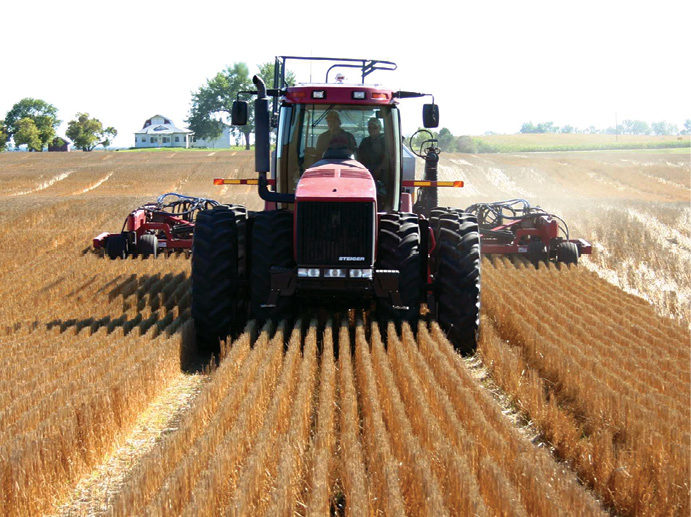No-Till Farmer
Get full access NOW to the most comprehensive, powerful and easy-to-use online resource for no-tillage practices. Just one good idea will pay for your subscription hundreds of times over.

Although researchers are not advocating paved lanes or painted lines down the middle of crop rows, some no-tillers are being encouraged to establish regular “tractor highways” in planting, spraying and harvesting.
The result of following the same tracks for all operations can be less soil compaction and higher yields.
These “tractor highways” are created by following the same route on each trip through the field. This means following the same row tracks year after year. This “controlled traffic” can help reduce soil density and compaction of seedbeds and rootbeds.
Controlled-traffic patterns improved soybean yields 7 to 10 bushels per acre under various tillage methods studied at Tuskegee Institute. Other similar studies showed an increase of up to half a bale of cotton.
In the furrow-irrigated, no-till area of north Texas, Soil Conservation Service agents encourage controlled traffic as a means of preserving planting ridges. When controlled-traffic patterns are used, they report ridges will last an extra season or more without having to be rebuilt.
Preliminary studies at both Iowa State University and Auburn University show root development in fine soils is retarded due to compaction from random tractor traffic.
One of the major stumbling blocks to widespread use of controlled traffic is the design of modern farm machinery.
Inroads are being made in this area as anti-soil compaction management becomes more practical.
As more research work is completed, it may become more apparent that no-till farmers have an advantage over conventional-tillage neighbors in fighting the…